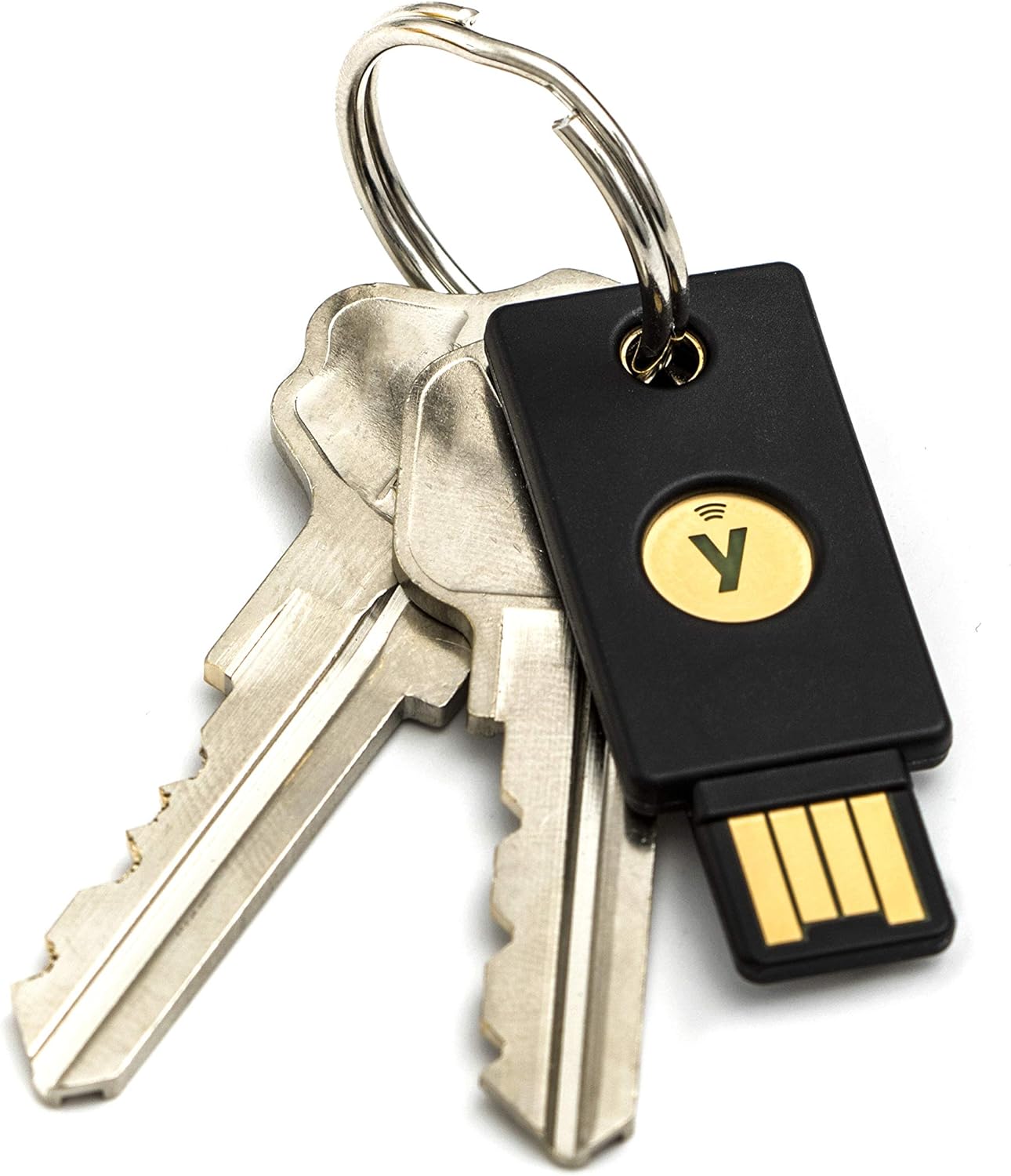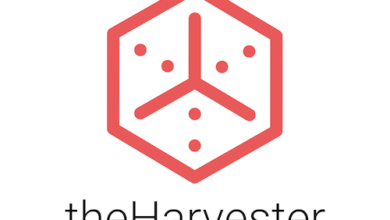Capturing and Annotating Screenshots with Snagit
Enhance Your Bug Bounty Reports with Detailed Visual Documentation

In the world of bug bounty hunting, clear and professional documentation can make all the difference. That’s where Snagit comes in. Snagit is a versatile screen capture and annotation tool that can elevate your bug bounty reports to the next level.
So, what makes Snagit a must-have tool in your bug bounty arsenal? Let’s dive into its capabilities and see how it can transform your approach to capturing and annotating screenshots.
Capturing Screenshots with Ease: Snagit is designed to make screenshot capture easy. Whether you need a full-screen capture, a specific window, or just a region of your screen, Snagit handles it all with precision. This flexibility ensures you can capture exactly what you need without any hassle.
Powerful Annotation Tools: Once you’ve captured your screenshot, Snagit offers a suite of annotation tools to help you highlight important details. You can add arrows, text, highlights, and even custom graphics to make your screenshots more informative and easier to understand. This is especially useful when you’re trying to illustrate complex vulnerabilities or guide someone through a series of steps.
Creating Professional Reports: A picture is worth a thousand words, and with Snagit, your bug bounty reports will be worth even more. High-quality, annotated screenshots can make your findings clearer and more impactful. They help the person reading your report quickly grasp the issue and understand its significance. This not only makes your reports more professional but also increases the likelihood that your submissions will be well-received and acted upon.
Versatility Beyond Screenshots: Snagit isn’t just for screenshots. It also supports video capture, allowing you to record your screen activity. This can be incredibly useful for demonstrating dynamic vulnerabilities that are best shown in action. Imagine capturing a video of a security flaw being exploited step-by-step – it’s like bringing your report to life!
Streamlined Workflow: Snagit integrates seamlessly into your workflow. Its intuitive interface and robust features make it easy to use, even if you’re new to screen capture tools. Plus, with Snagit’s cloud storage options, you can access your captures from anywhere, making it a convenient tool for on-the-go bug bounty hunters.
Engaging and Relatable: For Millennials and the younger generation, Snagit offers an engaging and relatable way to document their bug bounty efforts. The ability to quickly capture and annotate screenshots or videos means you can spend more time hunting bugs and less time on documentation. And let’s be honest, who doesn’t love a tool that makes work easier and more fun?
In the following sections, we’ll explore how to set up Snagit, capture different types of screenshots, and use its powerful annotation features to enhance your bug bounty reports. Get ready to take your documentation skills to the next level with Snagit!
Next up, we’ll dive into the setup process to ensure you’re ready to start capturing and annotating like a pro. Stay tuned!
Setting Up Snagit
Getting started with Snagit is quick and easy, ensuring you’re ready to capture and annotate in no time. Let’s walk through the installation and initial setup to make sure you’re all set.
Step-by-Step Instructions:
- Downloading Snagit:
- Visit the Snagit website.
- Click on the “Free Trial” button to test the software before purchasing it, or click “Buy” to purchase a license.
- Follow the prompts to download the installer for your operating system (Windows or macOS).
- Installing Snagit:
- Locate the downloaded installer file on your computer.
- Double-click the installer file to begin the installation process.
- Follow the on-screen instructions to install Snagit. This typically involves agreeing to the terms and conditions, selecting an installation location, and clicking “Install.”
- Once the installation is complete, launch Snagit from your applications folder or start menu.
- Initial Setup:
- When you first launch Snagit, you’ll be guided through an initial setup process.
- You may be prompted to sign in or create a TechSmith account. This account allows you to access additional features and cloud storage options.
- Follow the prompts to complete the setup.
- Configuring Snagit:
- Open Snagit and navigate to the settings menu (gear icon).
- Capture Preferences:
- Configure the capture settings according to your needs. You can set hotkeys for quick access to different types of captures (e.g., full screen, window, region).
- Enable or disable the capture cursor option, depending on whether you want the mouse cursor to appear in your screenshots.
- Output Preferences:
- Choose your preferred output options. Snagit allows you to save captures to your local drive or cloud storage or directly share them via email or messaging apps.
- Editor Preferences:
- Customize the Snagit Editor settings for optimal performance. You can adjust the theme, interface layout, and default tools available in the editor.
- Notification Preferences:
- Set up notifications for when captures are saved or shared. This can help you keep track of your work and ensure nothing gets lost.
- Customizing Settings for Optimal Performance:
- Hotkeys: Set up custom hotkeys for frequently used capture modes to streamline your workflow.
- Quick Access Toolbar: Customize the toolbar with your most-used tools and features for quick access.
- Profiles: Create profiles for different types of tasks. For example, you might have a profile for bug bounty hunting, another for creating tutorials, and another for general use.
- Testing Your Setup:
- Before diving into your bug bounty tasks, take a few test captures to familiarize yourself with Snagit’s interface and features.
- Experiment with different capture modes and annotation tools to see how they work and to ensure everything is configured to your liking.
Ready to Capture
Now that you’ve installed Snagit, you can start capturing and annotating like a pro. With your customized settings and quick access tools, documenting your bug bounty findings will be more efficient and effective.
Next, we’ll explore how to capture various screenshots with Snagit, ensuring you can document every detail with precision.
Capturing Screenshots: Tips and Tricks
Capturing high-quality screenshots is essential for documenting vulnerabilities and creating clear, professional reports. Snagit offers various capture modes to help you get the perfect shot every time.
Full-Screen Captures:
- How to Capture:
- Open Snagit and select the “Image” tab.
- Click the “Capture” button or press the hotkey you’ve configured for full-screen capture (default is usually Print Screen).
- Tips for High-Quality Full-Screen Captures:
- Ensure your screen is free of unnecessary windows and notifications to avoid clutter in your screenshot.
- If capturing a webpage, scroll to the top before taking the screenshot to provide context.
- You can use the “Timer” feature to delay the capture by a few seconds, giving you time to arrange your screen.
Window Captures:
- How to Capture:
- Open Snagit and select the “Image” tab.
- Click the “Capture” button or press the hotkey configured for window capture.
- Hover over the window you want to capture. Snagit will highlight the selected window.
- Click to capture the highlighted window.
- Tips for High-Quality Window Captures:
- Ensure the window is focused and fully loaded to capture all relevant details.
- Resize the window to exclude any unnecessary elements.
- Close other windows and applications to avoid distractions in the background.
Region-Specific Captures:
- How to Capture:
- Open Snagit and select the “Image” tab.
- Click the “Capture” button or press the hotkey configured for region capture.
- Click and drag to select the area you want to capture. Adjust the edges of the selection box if necessary.
- Release the mouse button to capture the selected region.
- Tips for High-Quality Region-Specific Captures:
- Zoom in on the area you want to capture to improve accuracy.
- Use the magnifier tool in Snagit to fine-tune your selection.
- Capture only the relevant part of the screen to focus attention on the important details.
Capturing Scrolling Screens:
- How to Capture:
- Open Snagit and select the “Image” tab.
- Click the “Capture” button or press the hotkey configured for scrolling capture.
- Hover over the scrolling window (like a webpage) and click the down arrow to start the capture.
- Snagit will automatically scroll through the content and capture it.
- Tips for High-Quality Scrolling Captures:
- Ensure the page or window is fully loaded before starting the capture.
- Close any pop-ups or ads that might interfere with the capture.
- Adjust the scroll speed in Snagit settings if needed to ensure smooth scrolling.
Advanced Capture Tips:
- Using the Timer:
- Set a delay timer for your captures to give yourself a few seconds to set up the perfect shot. This is especially useful for capturing drop-down menus or dynamic content.
- Keyboard Shortcuts:
- Memorize and customize keyboard shortcuts for different capture modes to speed up your workflow.
- Using the Snagit OneClick Tab:
- Enable the OneClick tab for quick access to capture modes and recent captures without opening the full Snagit application.
Perfecting Your Screenshots
With these tips and tricks, you’ll be able to capture high-quality screenshots efficiently, whether you’re documenting a full-screen application, a specific window, or a particular region. Snagit’s versatile capture options ensure you can always get the shot you need to make your bug bounty reports clear and professional.
Next, we’ll explore Snagit’s powerful annotation tools to help you enhance your screenshots with informative and visually appealing details.
Annotating Screenshots for Clarity
Annotations can transform a basic screenshot into a powerful communication tool, making complex information easy to understand. Snagit’s annotation tools allow you to add arrows, text, highlights, and more to emphasize key details and guide viewers through your findings.
Adding Arrows:
- How to Add Arrows:
- Open your captured screenshot in the Snagit Editor.
- Select the “Arrow” tool from the toolbar.
- Click and drag to draw the arrow pointing to the area you want to highlight.
- Tips for Effective Arrows:
- Use arrows to draw attention to specific elements, such as buttons or links.
- Adjust the arrow’s color, thickness, and style to ensure it stands out against the background.
- Position arrows so they don’t obscure important information.
Adding Text:
- How to Add Text:
- Select the “Text” tool from the toolbar.
- Click on the screenshot where you want to add text and start typing.
- Adjust the font, size, color, and alignment as needed.
- Tips for Effective Text Annotations:
- Use clear and concise language to explain what the viewer should notice.
- Choose text colors that contrast well with the background for readability.
- Position text boxes strategically to avoid clutter and maintain a clean layout.
Highlighting Areas:
- How to Highlight Areas:
- Select the “Highlighter” tool from the toolbar.
- Click and drag to highlight the area of interest.
- Tips for Effective Highlighting:
- Use the highlighter to emphasize important text or sections of the screenshot.
- Adjust the highlighter color and opacity to ensure it’s noticeable without obscuring the underlying content.
- Avoid overusing the highlighter to prevent distractions.
Adding Shapes:
- How to Add Shapes:
- Select the “Shape” tool from the toolbar.
- Choose a shape (rectangle, circle, etc.) and click and drag to draw it on the screenshot.
- Tips for Effective Shape Annotations:
- Use shapes to group related elements or draw attention to specific areas.
- Customize the shape’s border and fill the color to match your annotation style.
- Ensure shapes don’t cover critical parts of the screenshot.
Using Callouts:
- How to Add Callouts:
- Select the “Callout” tool from the toolbar.
- Click the screenshot where you want the callout to point, then type your text.
- Tips for Effective Callouts:
- Use callouts to provide additional context or instructions.
- Position the callout’s pointer accurately to the relevant part of the screenshot.
- Customize the callout’s appearance to ensure it’s clear and noticeable.
Annotating for Vulnerabilities:
- Highlighting Security Flaws:
- Use arrows and text to point out and describe specific vulnerabilities, such as an exposed API key or a weak password prompt.
- Providing Step-by-Step Instructions:
- Annotate screenshots with sequential numbers and brief descriptions to guide the viewer through steps like replicating a bug or testing a vulnerability.
Examples of Annotated Screenshots:
- Example 1: Identifying a Vulnerability:
- Capture a screenshot of a login page.
- Use an arrow to point to the password field.
- Add a text annotation next to the arrow: “Password field does not enforce minimum length.”
- Example 2: Step-by-Step Guide:
- Capture screenshots of each step in a process, such as navigating to a settings page.
- Add numbered callouts and text descriptions for each step: “1. Click on the gear icon. 2. Select ‘Settings’ from the dropdown menu.”
Enhancing Your Documentation
By effectively using Snagit’s annotation tools, you can make your screenshots more informative and impactful. Clear annotations help convey your findings and instructions, making your bug bounty reports more professional and easier to understand.
Next, we’ll look at how to create comprehensive step-by-step guides with Snagit, further enhancing your documentation capabilities.
Creating Step-by-Step Guides with Snagit
Step-by-step guides are invaluable for walking readers through complex processes or demonstrating how to replicate specific issues. Snagit makes it easy to capture, annotate, and organize screenshots into a cohesive and informative guide.
Capturing a Series of Screenshots:
- Plan Your Steps:
- Before you start capturing, outline the steps you need to document. This will help you stay organized and ensure you don’t miss any critical actions.
- Capture Each Step:
- Use Snagit to capture screenshots of each step of the process. Make sure to capture full-screen, window, or region-specific shots as needed.
- Keep the sequence of actions logical and easy to follow.
Organizing Screenshots into a Coherent Guide:
- Import Screenshots:
- Open Snagit Editor and import all the captured screenshots for your guide.
- Arrange the screenshots in the correct order by dragging and dropping them into place.
- Numbering the Steps:
- Use the “Numbered Steps” tool in Snagit to add sequential numbers to each screenshot. This helps readers follow the steps easily.
- Place the numbers in a consistent location, such as the top-left corner, to maintain a clean and professional look.
Annotating Each Step:
- Add Descriptive Text:
- Use the “Text” tool to add brief, clear descriptions to each screenshot. Explain what the reader needs to do or observe in each step.
- Keep the text concise but informative, focusing on essential details.
- Highlight Key Elements:
- Use arrows, highlights, and shapes to draw attention to important elements in each screenshot. For example, you can highlight buttons, fields, or error messages.
- Ensure your annotations are consistent in style and color throughout the guide.
Explaining Each Step for Maximum Clarity:
- Provide Context:
- Begin your guide with an introductory screenshot and a brief explanation of the process or issue you’re documenting. This sets the stage for the steps that follow.
- Include a summary screenshot at the end of the guide to recap the process or highlight the outcome.
- Use Callouts and Notes:
- Add callouts and notes to provide additional context or tips for each step. This is especially useful for complex actions or potential pitfalls.
- Position callouts clearly to avoid cluttering the screenshot.
Best Practices for Creating Step-by-Step Guides:
- Maintain Consistency:
- Ensure your screenshots, annotations, and text are consistent in style and formatting. This creates a cohesive and professional-looking guide.
- Keep It Simple:
- Avoid overloading each screenshot with too much information. Break down complex steps into smaller, more manageable parts if necessary.
- Test Your Guide:
- Before finalizing your guide, test it by following the steps yourself or having someone else follow it. This helps identify any unclear instructions or missing steps.
Example: Creating a Step-by-Step Guide
- Step 1: Capture Initial Screen:
- Screenshot: Login page
- Annotation: Arrow pointing to the username field
- Text: “1. Enter your username.”
- Step 2: Capture Next Action:
- Screenshot: Filled username field, cursor in password field
- Annotation: Arrow pointing to the password field
- Text: “2. Enter your password.”
- Step 3: Capture Final Step:
- Screenshot: User dashboard after login
- Annotation: Highlight around the dashboard area
- Text: “3. Click ‘Login’ to access your dashboard.”
Crafting Effective Step-by-Step Guides
Creating detailed and well-annotated step-by-step guides with Snagit enhances your ability to communicate complex processes clearly and effectively. These guides are essential for documenting vulnerabilities, providing instructions, and creating professional bug bounty reports.
Next, we’ll explore how to enhance your bug bounty reports with visuals, ensuring your findings are presented in the best possible light.
Enhancing Bug Bounty Reports with Visuals
Visual documentation can significantly enhance the clarity and professionalism of your bug bounty reports. Annotated screenshots help highlight key findings, guide the reader through complex issues, and make your submissions more compelling.
Incorporating Screenshots into Reports:
- Strategic Placement:
- Insert screenshots at relevant points in your report to illustrate specific findings or steps.
- Place each screenshot immediately after the corresponding text explanation to maintain a logical flow.
- Captions and Labels:
- Add captions to each screenshot to briefly describe what it shows. This helps the reader understand the context without relying solely on the accompanying text.
- Use consistent labeling for annotations within the screenshots, such as numbering steps or naming vulnerabilities.
Enhancing Readability and Professionalism:
- Consistent Formatting:
- Maintain a consistent format for all screenshots and annotations throughout the report. This includes font types, sizes, colors, and annotation styles.
- Ensure that the text in your report is clearly legible against the background of the screenshots.
- High-Quality Images:
- Use high-resolution screenshots to ensure all details are clear and easy to read.
- Avoid compressing images excessively, as this can reduce quality and make annotations difficult to see.
Examples of Effective Visual Documentation:
- Documenting a Vulnerability:
- Text Explanation: “The login form does not sanitize user inputs, leading to an SQL injection vulnerability.”
- Screenshot: Highlighted username field with an arrow pointing to the vulnerable input.
- Caption: “Figure 1: SQL injection vulnerability in the login form.”
- Step-by-Step Exploitation:
- Text Explanation: “The following steps demonstrate how to exploit the discovered vulnerability.”
- Step 1: “Enter a malicious payload in the username field.”
- Screenshot: Captured input field with the payload entered.
- Caption: “Step 1: Inputting the payload.”
- Step 2: “Submit the form to trigger the vulnerability.”
- Screenshot: Form submission with the resulting error or output.
- Caption: “Step 2: Result after submitting the payload.”
Using Annotations for Clarity:
- Arrows and Highlights:
- Use arrows to point out specific elements, such as fields, buttons, or error messages.
- Highlight sections of the screenshot that contain critical information or demonstrate the issue.
- Text and Callouts:
- Add text annotations to provide context or explain details directly on the screenshot.
- Use callouts to give additional information without cluttering the main text.
Best Practices for Visual Documentation:
- Keep It Simple:
- Avoid overloading screenshots with too many annotations. Focus on key points to keep the image clean and easy to understand.
- Break down complex issues into multiple screenshots if necessary, each with a specific focus.
- Use a Consistent Style:
- Establish a consistent annotation style, including colors, shapes, and fonts. This helps create a cohesive and professional look for your report.
- Proofread and Review:
- Double-check all annotations for accuracy and clarity.
- Ensure that all screenshots are correctly placed and labeled in your report.
Enhancing Your Reports with Snagit
Incorporating annotated screenshots into your bug bounty reports can significantly improve their readability and professionalism. Clear visual documentation helps convey your findings more effectively, making it easier for reviewers to understand and act on your submissions.
Next, we’ll explore Snagit’s video capture feature to see how recording your screen can enhance your documentation.
Snagit Video Capture: Recording Your Findings
Sometimes, a video can demonstrate a bug or vulnerability more effectively than a static image. Snagit’s video capture feature allows you to record your screen activity, creating dynamic and detailed documentation that can complement your annotated screenshots.
Recording Screen Activity:
- How to Start Recording:
- Open Snagit and select the “Video” tab.
- Click the “Capture” button or press the hotkey configured for video capture.
- Choose the area of your screen you want to record: full screen, window, or a specific region.
- Click “Record” to start capturing your screen activity.
- Recording Tips:
- Ensure your screen is organized and free of unnecessary windows or notifications.
- Plan your actions ahead of time to create a smooth and coherent recording.
- Use Snagit’s built-in microphone options to add voice narration if needed.
Creating Video Documentation:
- Demonstrating a Vulnerability:
- Record the steps needed to reproduce a vulnerability, showing each action in real-time.
- Highlight key moments in the video using Snagit’s cursor effects and zoom options to focus on important details.
- Explaining Complex Processes:
- Use video to explain multi-step processes or complex interactions that are difficult to convey through screenshots alone.
- Include voiceover narration to provide additional context and instructions.
When to Use Video Recordings:
- Dynamic Interactions:
- Use video recordings to capture dynamic interactions, such as animations, real-time data changes, or user interactions that involve multiple steps.
- Detailed Demonstrations:
- Video is ideal for demonstrating bugs or vulnerabilities that require a detailed walkthrough to understand fully.
- Complementing Screenshots:
- Combine video recordings with annotated screenshots to create comprehensive reports. Use screenshots for static elements and videos for dynamic actions.
Benefits of Video Documentation:
- Enhanced Clarity:
- Videos provide a clear and detailed view of the actions taken, making it easier for the viewer to understand the context and reproduce the steps.
- Engaging Content:
- Videos are more engaging than text or images, helping capture the viewer’s attention and convey information more effectively.
- Versatile Use:
- Video recordings can be used in various contexts, from bug bounty reports to training materials and presentations.
Editing Your Video:
- Trimming and Cutting:
- Use Snagit’s editing tools to trim unnecessary sections from your recording, ensuring the final video is concise and focused.
- Adding Annotations:
- Enhance your video with annotations, such as arrows, text, and highlights, to emphasize key points and provide additional explanations.
- Exporting and Sharing:
- Once you’ve edited your video, export it in a suitable format (e.g., MP4) for sharing. You can embed the video in your bug bounty reports or share it directly with your team.
Example: Using Video in Bug Bounty Reports
- Step-by-Step Vulnerability Demonstration:
- Video: Record a video demonstrating how to exploit a discovered vulnerability.
- Voiceover: Explain each step as you perform it, highlighting critical actions and outcomes.
- Annotations: Add arrows and text to emphasize important points during the recording.
- Combining Video and Screenshots:
- Video: Include a video walkthrough of the vulnerability in your report.
- Screenshots: Use annotated screenshots to provide additional details and static references alongside the video.
Elevate Your Documentation with Video
By incorporating Snagit’s video capture feature into your bug bounty toolkit, you can create compelling, detailed documentation that enhances your reports. Videos provide an engaging way to demonstrate vulnerabilities and explain complex processes, complementing your annotated screenshots and text descriptions.
Next, we’ll discuss best practices for using Snagit, ensuring you get the most out of this versatile tool.
Best Practices for Using Snagit
To make the most of Snagit’s powerful features, following some best practices is essential. These tips will help you capture and annotate screenshots effectively, organize your visual documentation, and maintain a consistent and professional style.
Capturing and Annotating Screenshots:
- Plan Your Captures:
- Before capturing screenshots, plan what you need to capture. This helps ensure you don’t miss any crucial details and makes the process more efficient.
- Use Hotkeys:
- Configure and use hotkeys for different capture modes to streamline your workflow. This allows you to capture images quickly without interrupting your process.
- Consistent Annotations:
- Use a consistent annotation style, such as the same colors, fonts, and shapes. This makes your documentation look cohesive and professional.
- Highlight Key Areas:
- Use highlights, arrows, and callouts to draw attention to important details. Make sure these annotations are clear and do not obscure the content.
- Keep It Simple:
- Avoid cluttering your screenshots with too many annotations. Focus on the most critical elements to ensure your message is clear.
Organizing Visual Documentation:
- Create a Folder Structure:
- Organize your screenshots and videos into folders based on projects, tasks, or reports. This makes it easier to find and manage your files.
- Name Files Descriptively:
- Use descriptive file names that reflect the content of the screenshot or video. This helps you quickly identify the files you need.
- Use Tags:
- Utilize Snagit’s tagging feature to categorize and filter your captures. Tags can help you sort and retrieve related screenshots efficiently.
- Regular Backups:
- To avoid losing important files, regularly back up your visual documentation. Use cloud storage solutions or external drives for redundancy.
Maintaining a Consistent Style:
- Set Annotation Defaults:
- Configure default annotation settings, such as font size, color, and arrow styles. This ensures consistency across all your captures.
- Template Use:
- Create templates for common types of documentation, such as step-by-step guides or vulnerability reports. This saves time and maintains a uniform style.
- Review and Edit:
- Always review and edit your screenshots and videos before finalizing them. Look for inconsistencies and make necessary adjustments to keep the style consistent.
Safety Tips for Data Privacy and Security:
- Mask Sensitive Information:
- Before sharing or saving screenshots, use Snagit’s tools to blur or redact any sensitive information, such as usernames, passwords, or personal data.
- Secure Storage:
- To prevent unauthorized access, store your visual documentation in secure locations, such as encrypted drives or password-protected cloud storage.
- Be Mindful of Sharing:
- When sharing screenshots or videos, ensure that you only share them with authorized individuals. Use secure methods of sharing, like encrypted emails or secure file-sharing services.
- Regular Updates:
- Keep Snagit and your operating system updated to the latest versions to protect against security vulnerabilities and ensure you have access to the newest features.
Maximizing Efficiency with Snagit
By following these best practices, you can maximize your efficiency and effectiveness when using Snagit. Consistent, well-organized, and secure visual documentation not only enhances the quality of your bug bounty reports but also streamlines your workflow, making your bug bounty hunting efforts more productive and professional.
Next, we’ll conclude with a recap of the key points and an invitation to integrate Snagit into your bug bounty toolkit.
Elevate Your Bug Bounty Hunting with Snagit
Throughout this article, we’ve explored how Snagit can enhance your bug bounty-hunting efforts. Snagit provides a comprehensive set of tools that can elevate your documentation and reporting to new heights, from capturing and annotating screenshots to creating step-by-step guides and recording detailed videos.
Recap of Snagit’s Benefits:
- High-Quality Captures:
- Snagit makes capturing high-quality screenshots and videos easy, ensuring every detail is documented with precision.
- Powerful Annotation Tools:
- With Snagit’s extensive annotation features, you can highlight key information, add context, and create clear, professional-looking documentation.
- Step-by-Step Guides:
- Creating comprehensive guides is straightforward with Snagit, helping you to convey complex processes and vulnerabilities clearly and effectively.
- Video Documentation:
- Snagit’s video capture capabilities complement static images by allowing you to demonstrate dynamic interactions and provide in-depth explanations.
- Organized and Consistent:
- By following best practices, you can maintain a consistent style and organize your visual documentation efficiently, making it easier to manage and share.
Encouragement to Integrate Snagit:
Integrating Snagit into your bug bounty processes can significantly enhance the quality and clarity of your reports. The ability to capture, annotate, and organize your findings makes your submissions more professional and improves the chances of your reports being well-received and acted upon.
We encourage you to start using Snagit for your bug bounty-hunting tasks and see the difference it makes. Share your experiences, tips, and success stories within the BugBustersUnited community to help others benefit from this powerful tool.
By leveraging Snagit’s capabilities, you can elevate your bug bounty-hunting efforts, create more impactful reports, and contribute to a more secure digital world. Happy bug hunting!






